Building a better-connected Africa to tackle challenging global issues
(People's Daily Online) Sissy Zhang 2016-02-01 02:39

A South African interacts with a dancing robot with Huawei Smart Home solution at AfricaCom in Cape Town. (Zhang Jiexian / People’s Daily Online)
These innovative technologies are improving the lives of all Africans. Taking ZTE’s iRail solution as an example, the railway radio broadband communication solution based on LTE technology provides broadband applications such as the passenger information service, digital advertisement solutions, and patrol alarm system, which enables railway operations to be more stable and efficient. As Yang Jun, Vice President of ZTE pointed out, “ZTE is the first manufacturer in the industry to introduce LTE technology into the railway communication field, going way beyond the standard, and put it into commercial use.”
Charles Ding also highlighted how advanced ICT infrastructure can contribute positively to a country's GDP and its competitiveness. According to the Global Connectivity Index, a 20% increase in ICT investment will grow a country's GDP by 1%.
Currently, there are more than 50 countries that have invested or committed to invest more than 100 billion US dollars on the construction of national ICT infrastructure. Jacob Munodawafa, Executive Secretary of Southern African Telecommunication Association (SATA) shared the strategy on national broadband deployment: “Broadband network and related ICT applications are regarded as strategic infrastructure which can help tackle the most challenging global issues of the 21 century, such as poverty, illiteracy, unemployment, economic recession, public service, and healthcare.”
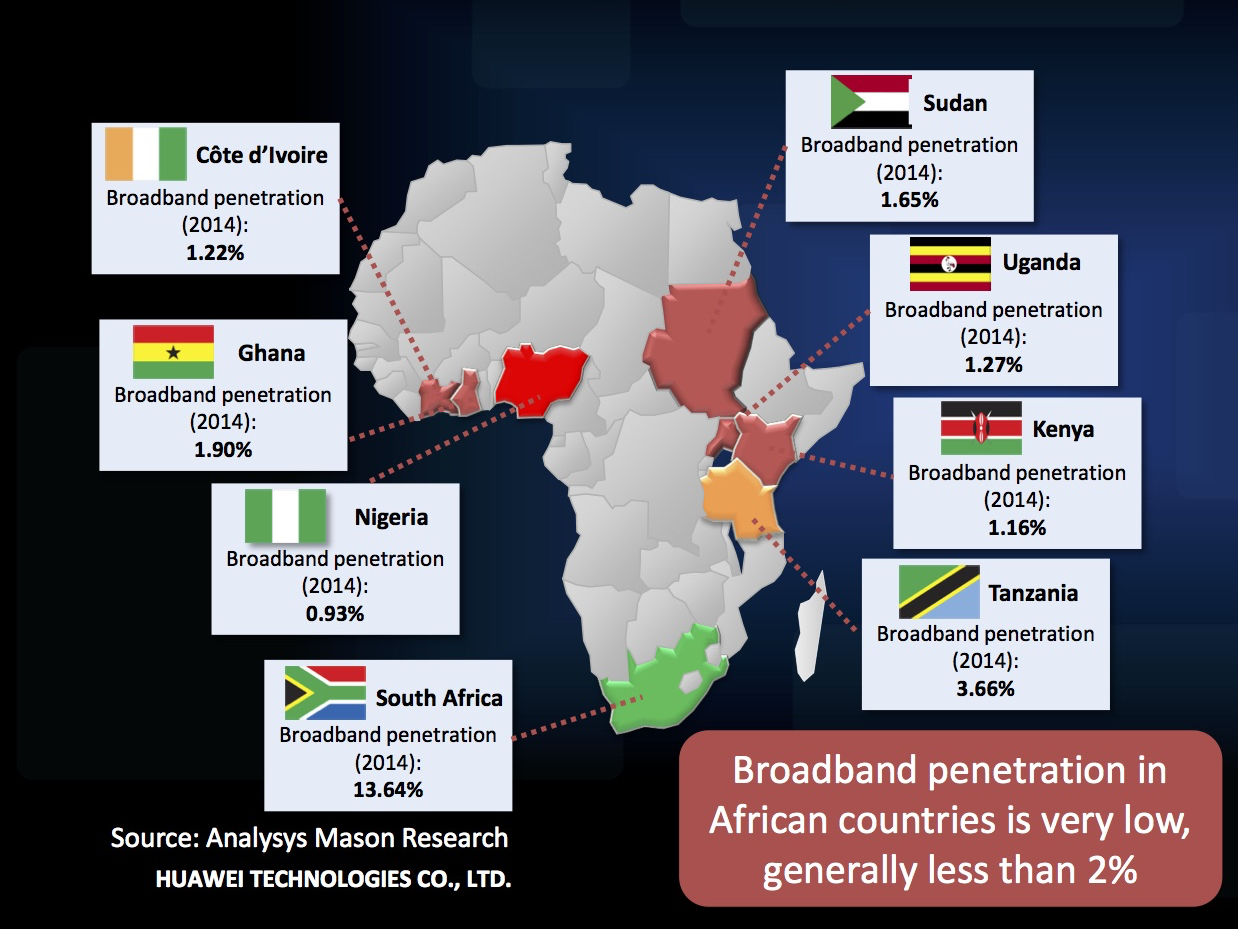
Broadband penetration in Africa countries (Source: Analysys Mason Research)
The worldwide Broadband Commission “Connect 2020 Agenda” announced earlier this year has set new goals for global ICT development towards 2020. This initiative has further inspired many SADC countries to start their own National Broadband rollouts.
Furthermore, South Africa’s National Broadband Policy identifies a range of policy interventions necessary to achieve the ambitious but achievable targets. A universal average download speed of 100 Mbps by 2030 has been set. Progressive targets have been set for an average user experience speed of 5 Mbps to be available to 50% of the population by 2016, and to 90% by 2020, with quality of service and prices to be monitored by the regulator.
South Africa also signed a Plan of Action on areas of cooperation in ICT with China in June. The Plan covers cyber security, E-government, E-skills professional training as well as broadband strategies for implementation and rural access, electronics manufacturing and technology transfer, research and Development in ICT.
“Chinese telecoms enterprises are welcome because we want strong competition.” Minister of Telecommunications and Postal Services, Dr. Siyabonga Cwele, told People’s Daily Online,"We also hope that they partner with some of our small business sector and assist them in training.”
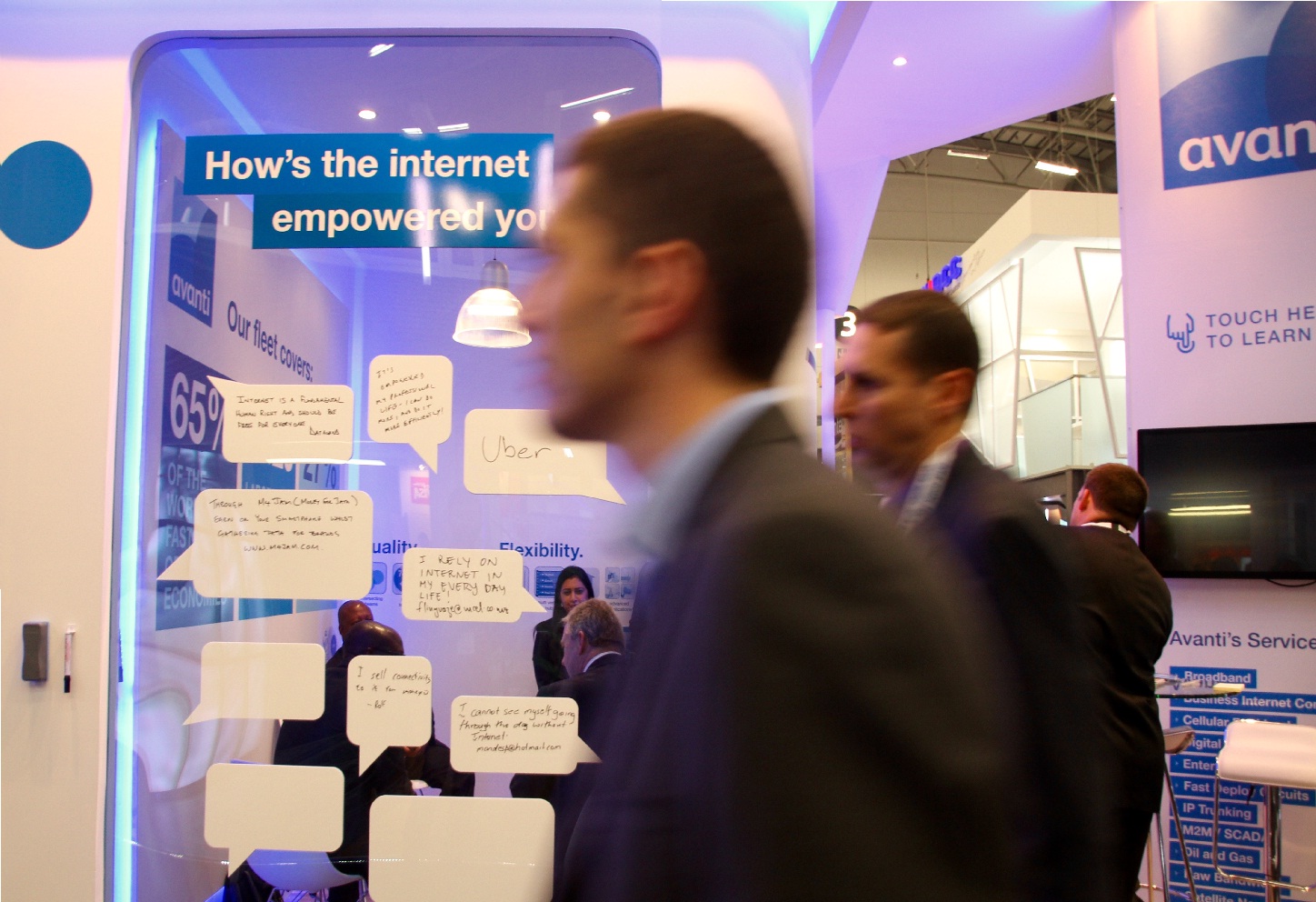
AfricaCom 2015, the biggest technology exhibition in Africa, is held under the theme “Open ROADs to a better connected world” in Cape Town this November. (People’s Daily Online / Sissy Zhang)
According to Cwele, SA is currently looking at stimulating its ICT manufacturing. “We know china is producing a lot of gadgets, It would be better if we partner up and relocate some of those manufacturing units to this country, so we can supply the whole of Africa.” He added that SA had put incentives and developed industrial development zones with competitive tax rates.”
“We are dedicated to support the regional industry stakeholders in their efforts to drive Africa’s connectivity agenda,” said Xin Dajiang, the Vice President of Huawei. “By linking up national broadband initiatives to drive country to country broadband connectivity from coast to coast across Africa.”
Meanwhile, China Telecom, MTN’s counterpart in China, plans to design and build eight vertically and horizontally-laid fiber optic cable networks across the African continent, with a total length of 150,000 km, covering 48 African countries, connecting 82 major cities.
It has invested about US$50 million in African telecom infrastructure, including submarine cable resources connecting major African economies.
However, it is far-fetched to neglect existing obstacles that the continent is facing in developing its telecom industry. Spectrum allocation is one of them. While spectrum being the engine that drives national telecom development, its allocation in Africa is quite slow. Antony Chigaazira, Executive Secretary of the Communications Regulators Association of Southern Africa, (CRASA) emphasized: “More spectrum resources can accelerate the adoption of broadband by individuals and households, and support the development of the Internet of Things (IoT) and smart cities.”
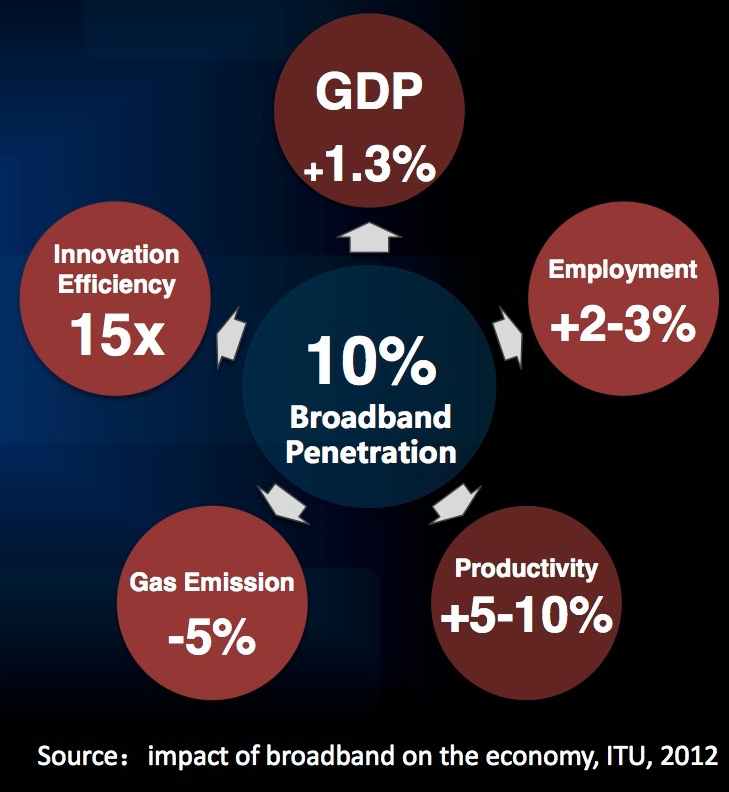
A 10% increase in broadband penetration will grow a country's GDP by 1.3%. (Source: ITU)
All these developments have the power to fuel ICT innovation. “Over the next five years as Africa transitions from analogue to digital television, we are presented with an enormous opportunity: new frequencies are becoming available that can be used to increase high-speed wireless internet access for all Africans,” Chigaazira commented and added that CRASA was committed to expediting the revision of the SADC Spectrum Allocation Plan as soon as Final Acts from the ongoing World Radio Conference (WRC 15) were out.
Over the next five years, mobile broadband deployment needs at least 2 GHz of spectrum, yet very few countries have allocated new LTE spectrums. Many of the required LTE spectrum bands mainly in the 700Mhz and 800 MHZ frequency bands will not be available until the finalization of the Digital TV migration that transfers the spectrum occupied by analog television to telecommunications sector, which in many African countries including South Africa is taking longer than anticipated..
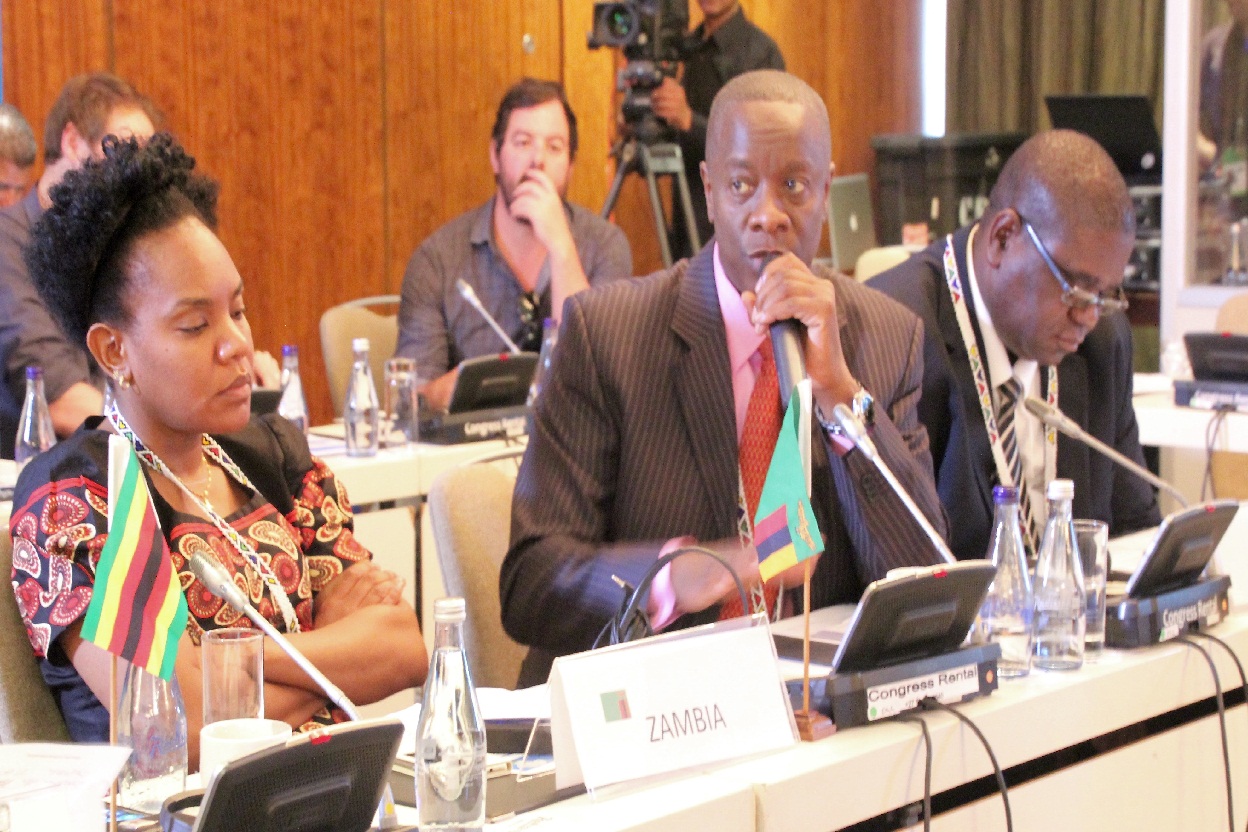
Representatives from Southern African Telecommunication Association discuss the rollout of broadband in the region at the Southern African Region CEO Roundtable Discussion in December. (People’s Daily Online / Sissy Zhang)
“We are working closely with operators, regulators and all related partners to advise on the importance of early spectrum allocation and we have been doing this at various conferences and forums throughout the year.” said Yang Hongjie, Marketing Director of Huawei Eastern and Southern Africa, “We have been advising the regulators that spectrum allocation should be consistent with Technology and Service Neutrality, Guarantee of Coverage and Speed.” He added.
Currently Operators are making use of Spectrum Refarming technology to re-use the existing 2G and 3G spectrum to deploy LTE. Service providers are working on alternatives, using other available spectrum bands such as white spaces and C-Band and unlicensed spectrum for Wireless Broadband deployment.
On the other hand, local technicians are in great demand. With 7 technology training centers set up by Huawei across Africa to transfer ICT knowledge, over 30,000 ICT professionals have been trained to date.
“We also launched our Seeds for the Future program in Africa. Through this program, we are working with local governments and universities to send students abroad, to get work experience and training at our Huawei headquarters.” added Ding. The ICT talent cultivation program has been rolled out in Kenya, Zimbabwe, Zambia, Angola, and is to be implemented in more countries in Africa, estimated to benefit over 1000 African students in the next five years.
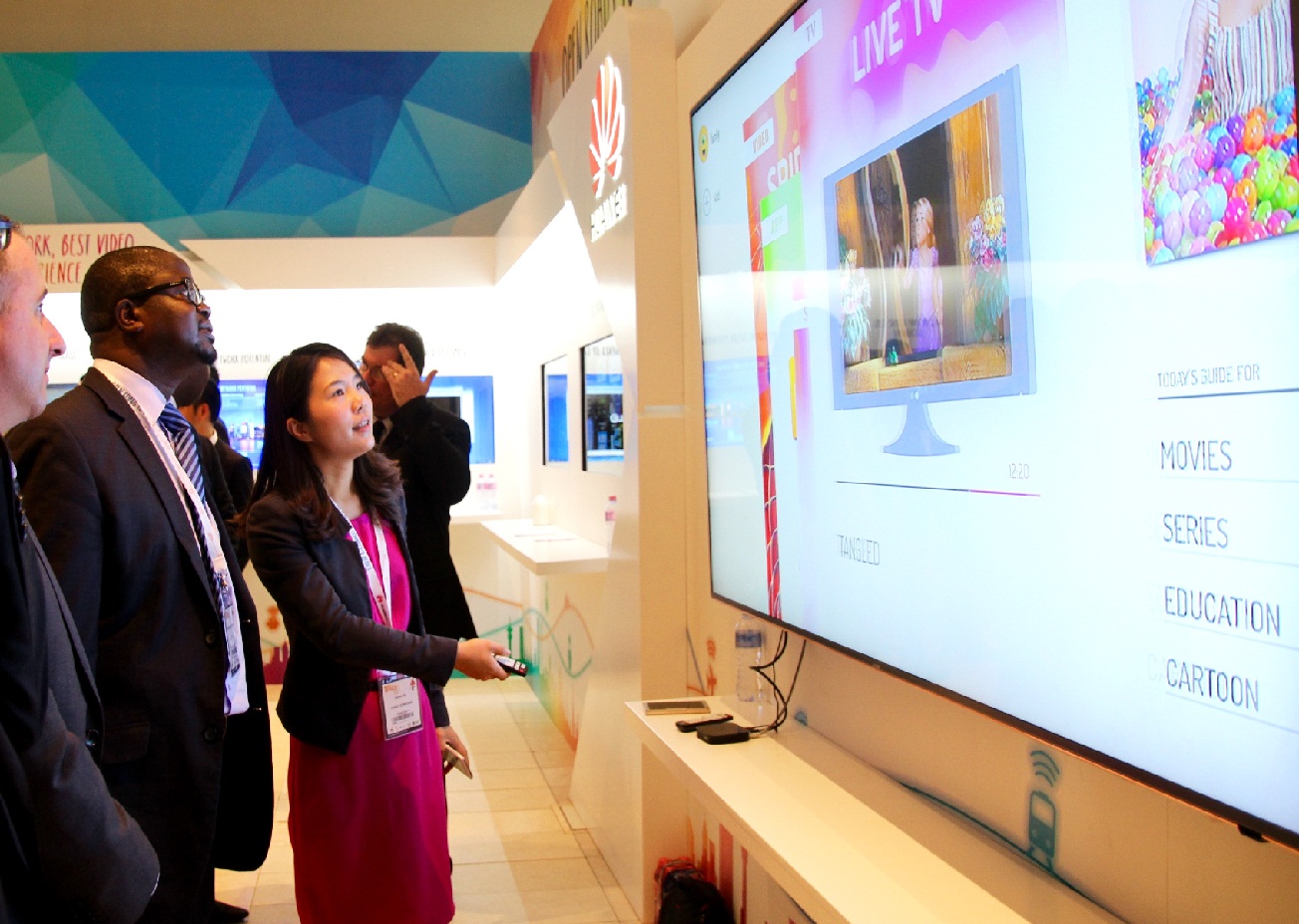
Huawei showcases 4K video demos at AfricaCom, focusing on the experience of video service and digital service transformation. (People’s Daily Online / Sissy Zhang)





